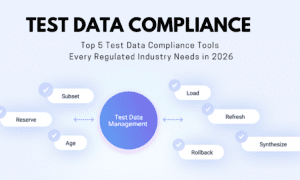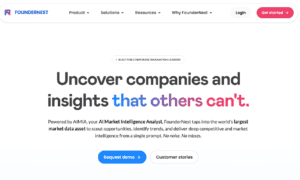In 2015, the mobile app economy was surging towards the future, but its underlying infrastructure remained frustratingly primitive. For product managers at major companies, making even the simplest change to their app, such as fixing a typo, swapping an image, or updating a headline, was a monumental task. They were handcuffed by technical dependencies and slow, cumbersome processes, often forced to wait for App Store approvals that could take a week or more.
This pain was felt universally across the industry. A March 2016 survey by MacStories captured the developer frustration, revealing that the average App Store review time “rarely drops below 6 days and is often at 8 or more days.” This created a constant state of anxiety, as one developer lamented in the report, “if a critical bug is found, it can take over a week to get a fix to users.” The process was an opaque black box that made planning impossible. As another developer wrote at the time, “We submit our apps and wait. And wait. And wait. This uncertainty makes it impossible to plan.”
This critical bottleneck wasn’t just an inconvenience; it was costing companies millions in lost opportunities and delayed launches. Brilliant ideas for improving user experiences were being shelved, stalled by a development cycle trapped in the past. It was this pervasive, industry-wide frustration that created the perfect opening for a new kind of solution.
The Platform That Broke the Cycle
This is the challenge that led to the creation of Hansel.io, but its path to a solution wasn’t a straight line. Initially, the company aimed to solve the problem for developers. The first version of Hansel was a developer platform designed to fix mobile bugs after an app was shipped. The platform aimed to accelerate bug-fix cycles by providing a dashboard where developers could activate pre-packaged “hooks” in the live app, allowing them to execute custom instructions and resolve issues on the fly.
A Strategic Pivot to Empower Product Managers
However, with the advent of developer technologies like ReactNative by Facebook and Flutter by Google, the landscape began to shift. The Hansel.io team spotted a seismic trend beforehand: these new frameworks would soon allow developers to deploy business logic and fixes in a matter of minutes, limiting the long-term potency of a bug-fixing product.
Faced with a potentially obsolete model, the company made a crucial pivot. In its new avatar, Hansel.io shifted its focus from developers fixing bugs to empowering product managers to ship entirely new experiences. The core technology was repurposed to allow the business side of a company to make changes in minutes without having to get blocked on new releases or engineering bandwidth.
Bringing Web-Like Agility to Mobile Apps
This new direction became the company’s breakthrough, applying proven web development principles to the rigid world of mobile apps. “Think about how websites used to be managed. If you wanted to change a photo or fix a headline, you had to ask a developer to edit the HTML and push that change live,” explains founder Parminder Singh. “That all changed when WYSIWYG editors gave product and marketing teams the power to make updates themselves. We are doing for mobile apps what those editors did for the web.”
Hansel.io’s revamped platform allowed product managers to render a live, interactive projection of their mobile app directly in a web browser, select specific components to modify, and deploy those changes instantly without touching a single line of code. The technology eliminated the traditional bottlenecks that plagued mobile development: no need for new engineering sprints, code deployments, or release cycles.
This new platform positioned Hansel.io uniquely within a competitive landscape. While contemporaries like Pendo and Apptimize were also helping teams iterate faster, they operated on different levels. Pendo excelled at in-app guidance and analytics, primarily for B2B web applications. Apptimize focused on cosmetic A/B testing for mobile apps, allowing teams to tweak visuals or copy. Hansel.io carved out its niche by going deeper. It empowered product managers to modify the app’s underlying logic and workflows in production, a far more powerful capability that unlocked a new tier of dynamic personalization and experimentation without writing new code.
From Weeks to Clicks: An Industry Transformed
The platform’s impact was immediate and measurable. For fast-moving companies like ride-sharing giant Ola and digital payment platform Paytm, this new agility translated directly into a powerful competitive advantage. As Rohit Sharma, Engineering Manager at Paytm, noted, “Hansel has helped us save weeks of development and QA effort thanks to their configurational capability and the ability to deploy instant changes in the app.”
This rapid adoption by major players created intense behind-the-scenes challenges that tested the young company’s resilience. “Hansel has come a long way,” Parminder Singh reminisced. “When we onboarded our first large customer, everything was running on just two servers. Within a few weeks, our traffic shot up from thousands of requests per minute to millions. Practically overnight, we had to overhaul our entire infrastructure. That’s how scrappy we were back in the day.”
Industry Recognition and Investor Confidence
This market traction was quickly validated by major industry recognition. In 2017, the company was named a Gartner Cool Vendor in Mobile App Development, with the report highlighting how Hansel.io solves one of the “biggest pain points” for mobile leaders. The company was also selected for YourStory’s prestigious Tech30 list and NASSCOM’s Emerge50 program. Co-founder Varun Ramamurthy’s invitation to speak at ProductCon NY in 2019 further cemented their status as industry thought leaders.
Investors saw the massive potential in the problem Hansel.io was solving, leading to multiple funding rounds totaling $6 million and a strategic expansion into Silicon Valley. SateeshAndra, managing director at Endiya Partners, explained the opportunity at the time: “it becomes imperative to deliver superior runtime experience for customers on the mobile platform in order to retain them.” The scale of their reach was noted by another director with Endiya Partners, Abhishek Srivastava, who said at the time, “Hansel’s presence in more than a quarter billion unique smartphones is only a testament to the growing need for hyper-personalized experiences with faster and cost-effective turnaround.”
The Acquisition and a New Era of Mobile Agility
By 2020, Hansel.io had proven its value so convincingly that it was acquired by NetcoreCloud. The acquisition was the ultimate validation of the company’s founding thesis: that mobile app management needed to become as flexible and immediate as the web. As Kalpit Jain, Netcore’s Group CEO, commented, “With the amalgamation of Hansel’s capabilities, Netcore will provide the much-needed agility to marketers and Product Managers, thus building a seamless end-to-end Customer Experience.”
In the end, the story of Hansel.io became a testament to how a small team’s foresight and a crucial pivot could fundamentally change the speed at which an entire industry operates.



































